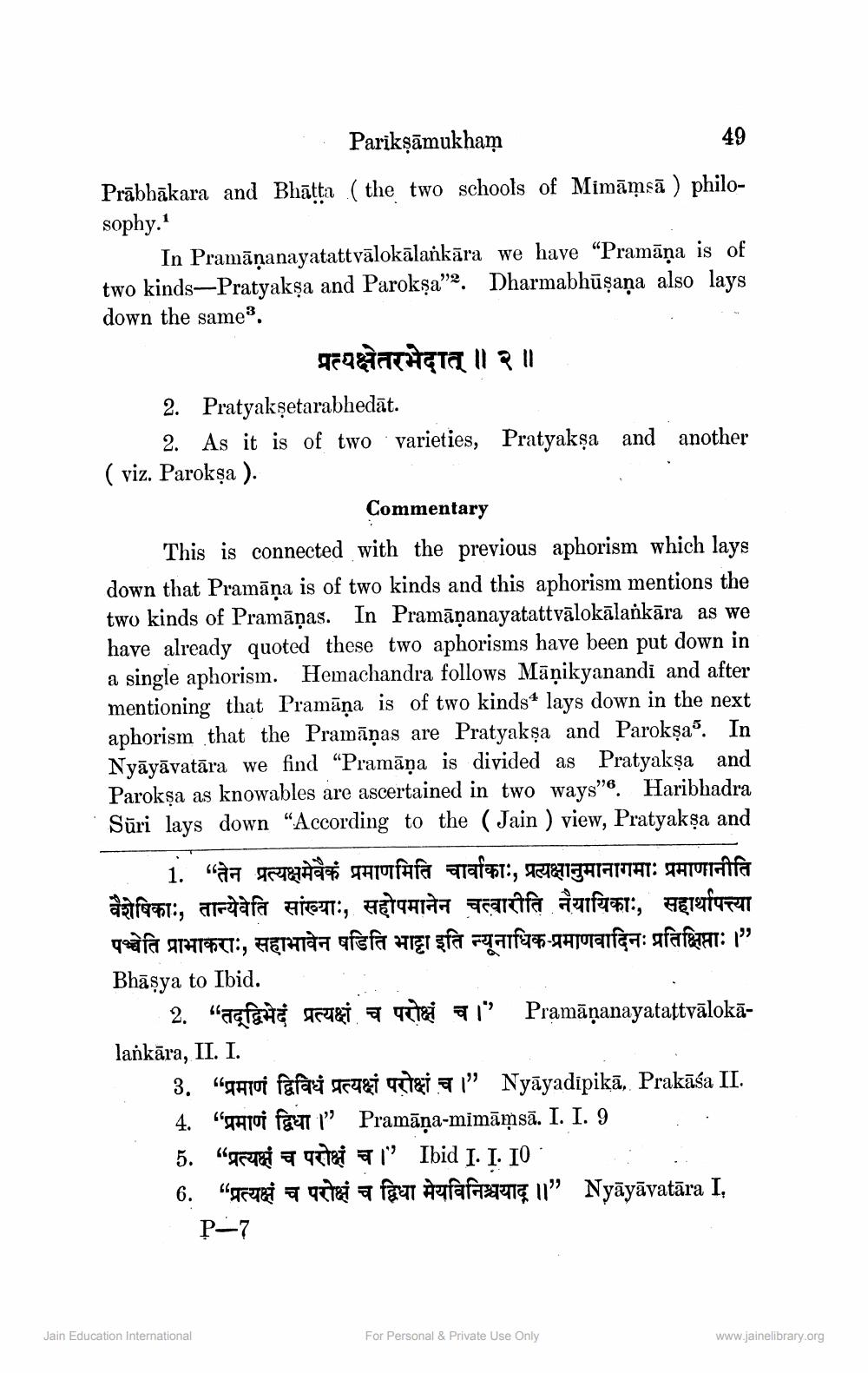________________
49
Parikşāmukham Prābhākara and Bhūtta ( the two schools of Mimāmsā) philosophy.
In Pramāṇanayatattvālokālankāra we have "Pramāṇa is of two kinds-Pratyakşa and Parokşa”2. Dharmabhūşaņa also lays down the same
qaraçta 11 2 11 2. Pratyakşetarabhedāt.
2. As it is of two varieties, Pratyakşa and another ( viz. Parokşa ).
Commentary This is connected with the previous aphorism which lays down that Pramāņa is of two kinds and this aphorism mentions the two kinds of Pramāņas. In Pramāṇanayatattvālokālankāra as we have already quoted these two aphorisms have been put down in a single aphorism. Hemachandra follows Māņikyanandi and after mentioning that Pramāņa is of two kinds* lays down in the next aphorism that the Pramāṇas are Pratyakșa and Parokşa”. In Nyāyāvatāra we find “Pramāṇa is divided as Pratyaksa and Parokșa as knowables are ascertained in two ways”6 Haribhadra Sūri lays down “According to the (Jain ) view, Pratyakşa and
_1. "तेन प्रत्यक्षमेवैकं प्रमाणमिति चार्वाकाः, प्रत्यक्षानुमानागमाः प्रमाणानीति वैशेषिकाः, तान्येवेति सांख्याः, सहोपमानेन चत्वारीति नैयायिकाः, सहार्थापत्त्या पञ्चेति प्राभाकराः, सहाभावेन षडिति भाट्टा इति न्यूनाधिक प्रमाणवादिनः प्रतिक्षिप्ताः ।" Bhāşya to Ibid.
2. salah 54&T a 7 a 1" Pramāṇanayatattvālokālankāra, II. I.
3. "Thi fafaa argei TT&" Nyāyadipikā, Prakāśa II. 4. "HOT FETT 1" Pramāņa-mimāmsā. I. I. 9 . 5. “Fue a Tail" Ibid 1. I. 10 6. "Te uiti a facut fafana 11" Nyāyāyatāra I,
P—7
Jain Education International
For Personal & Private Use Only
www.jainelibrary.org




